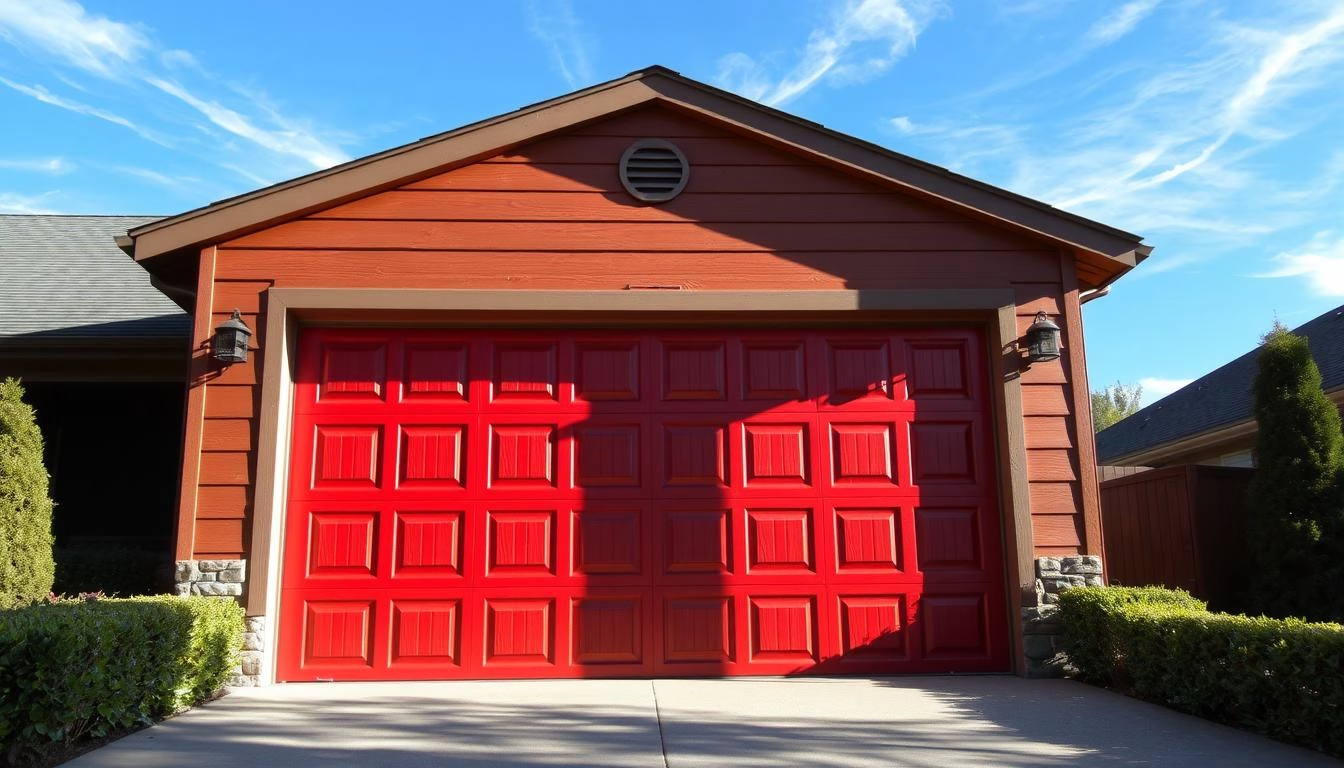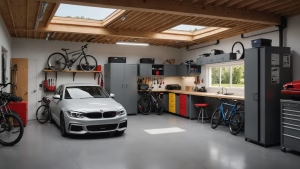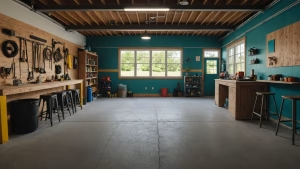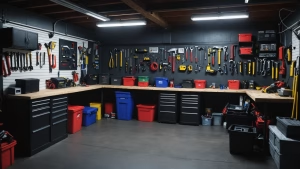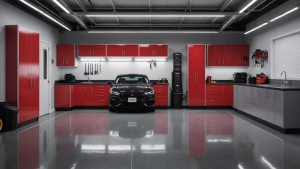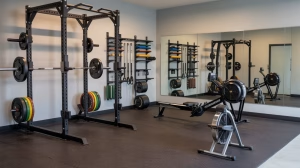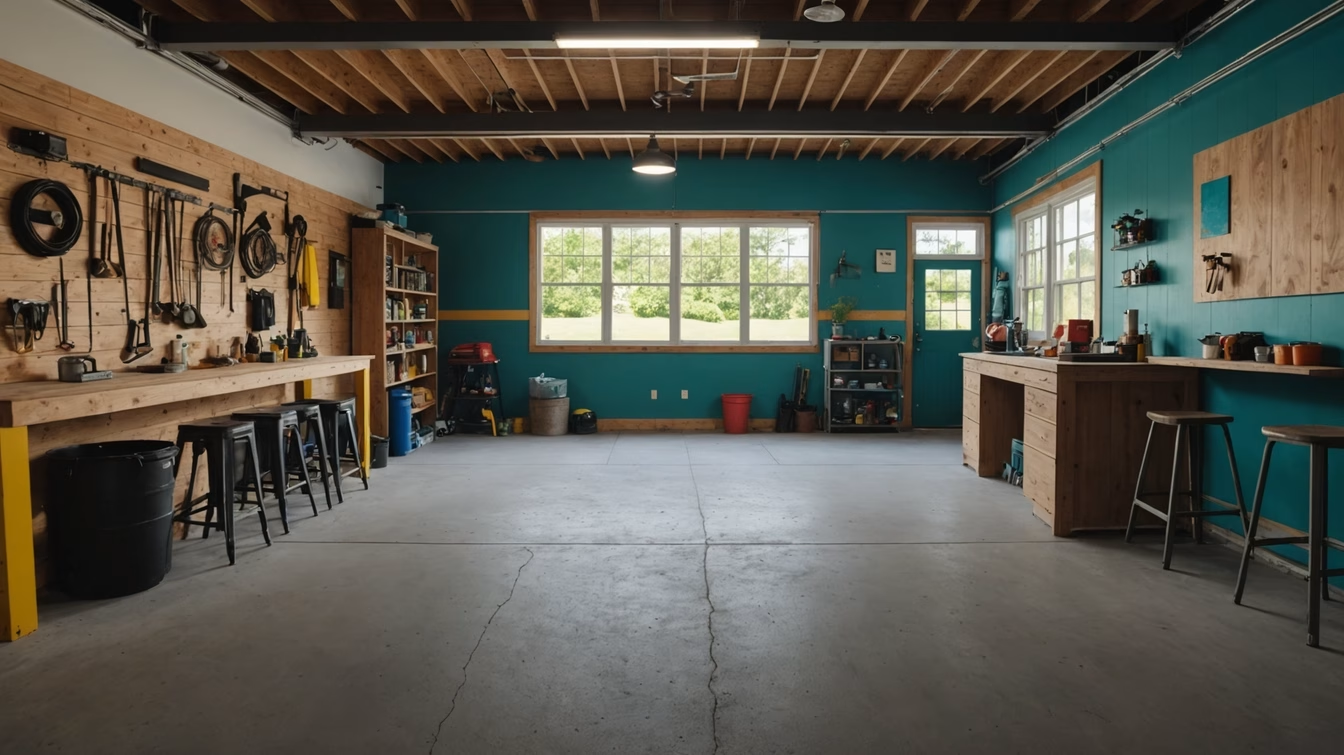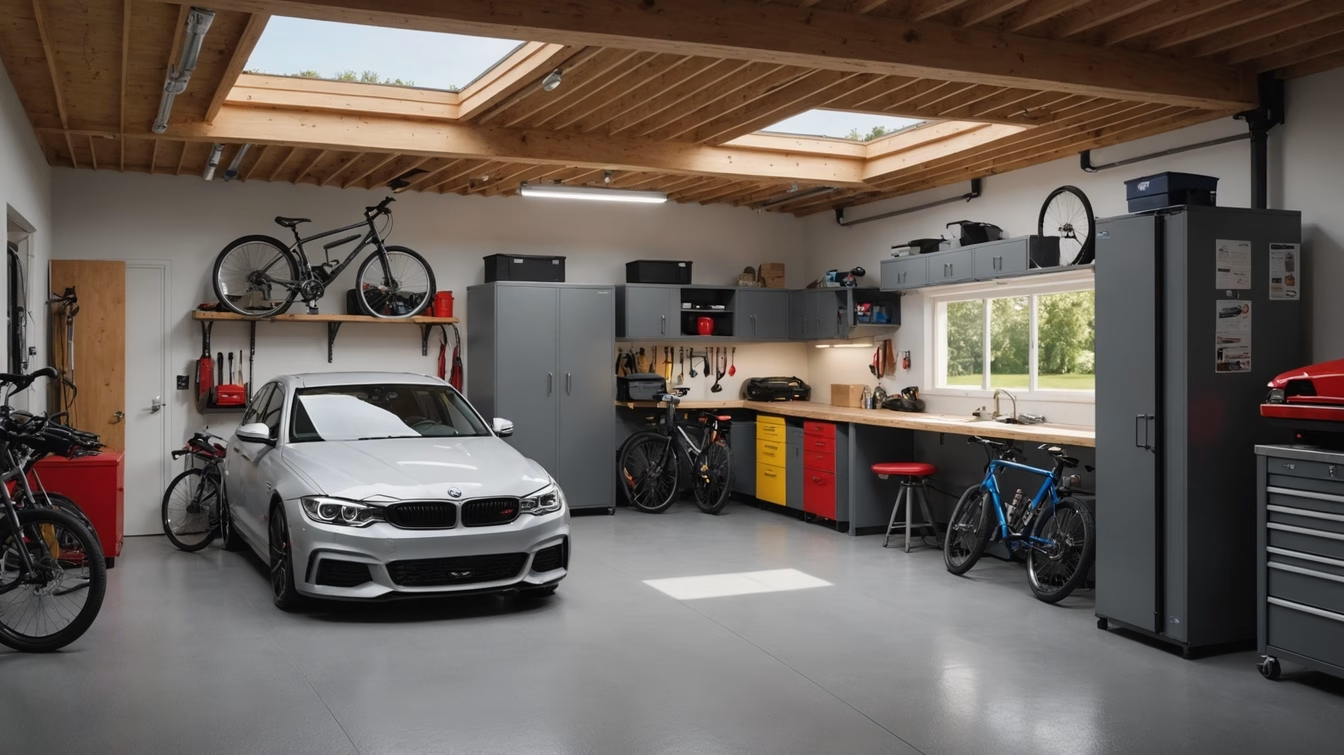Updating your garage door can boost curb appeal and refresh your home’s exterior. Many homeowners debate whether this home improvement project is worth the effort. According to Jim Norman from Overhead Door Company of Central Jersey, choosing the right paint depends on the door’s material.
Vinyl or plastic doors need special paint to avoid damage. Around 30% of garage doors in the U.S. get repainted for a cleaner, modern appearance. Climate, maintenance, and warranty terms also play a role in the decision.
Dark colors like black absorb more heat, while lighter shades reflect sunlight. Always check manufacturer guidelines before starting. A well-painted door can transform your home’s look without a full replacement.
Key Takeaways
- Material matters—vinyl doors require specific paint types.
- Nearly one-third of U.S. homeowners repaint for better curb appeal.
- Climate affects paint durability and performance.
- Darker colors increase heat absorption.
- Check warranties to avoid voiding coverage.
Pros of Painting Garage Doors
A fresh coat of color can instantly elevate your home’s exterior charm. Williams Professional Painting emphasizes how matching siding or creating bold contrasts modernizes the entire facade. Nearly 70% of realtors confirm that curb appeal directly influences property value.
Color psychology plays a key role. Sleek black delivers a contemporary edge, while crisp white suits traditional designs. Trending monochromatic schemes or accent doors integrate seamlessly with modern home exteriors.
Older steel or wood surfaces often show wear. Strategic painting garage door choices mask scratches and dents effectively. This cost-efficient refresh avoids the expense of full replacements.
Beyond functionality, aesthetic appeal allows personal expression. Factory finishes limit creativity, but custom colors reflect individuality. Well-maintained exteriors also boost perceived worth, per 2023 NAR data.
Cons of Painting Garage Doors
While repainting offers visual upgrades, it comes with hidden challenges. Factory-applied finishes last 10–15 years, but DIY paint degrades faster. A PPG Industries study found 63% of aftermarket paints fail within three years due to weather exposure.
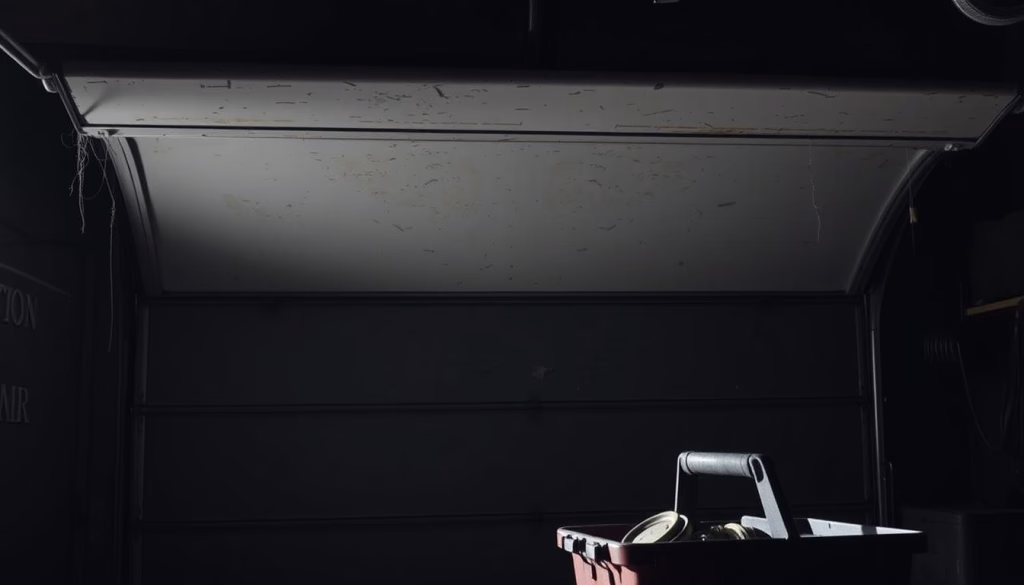
Dark colors like black absorb heat, raising surface temps by 40°F. This strains materials—steel expands, while vinyl may warp. Higher cooling costs add up over time, especially in sunny regions.
| Finish Type | Lifespan | Maintenance Needs |
|---|---|---|
| Factory Finish | 10–15 years | Minimal |
| DIY Paint | 2–5 years | Frequent touch-ups |
Pollen and dust show easily on dark finishes, demanding weekly cleaning. Clopay and Overhead Door warranties often void if non-approved paints are used. Always check guidelines to avoid costly mistakes.
UV rays break down pigments, causing fading and peeling. Thermal stress from repeated heating and cooling weakens the material over time. Lighter shades reduce these risks but still require regular upkeep.
Is It a Good Idea to Paint Garage Doors? Key Factors to Consider
Different door materials demand unique painting strategies for lasting results. Factory powder-coated metals, vinyl’s infused color, and wood’s paint dependency each require tailored approaches. Williams Painting notes thermal-reflective tech in factory finishes outperforms DIY methods.
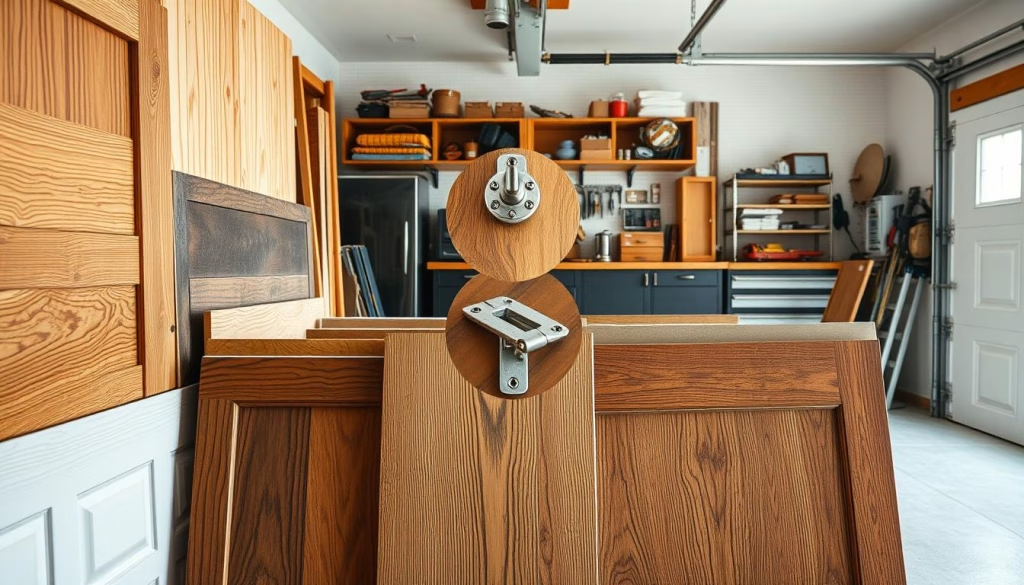
Steel or aluminum doors rarely need recoating unless the factory finish fails. Epoxy primers prevent rust on exposed metal. Avoid dark shades in sunny climates—heat absorption warps panels faster.
Vinyl surfaces require adhesion promoters for paint to stick. Stick to darker colors to minimize warping risks. Lighter shades may need frequent touch-ups due to UV damage.
| Material | Repainting Frequency | Key Maintenance Requirements |
|---|---|---|
| Wood | Every 5–7 years | Oil-based paints for moisture protection |
| Steel | 10+ years (if factory-coated) | Epoxy primers for rust-prone areas |
| Vinyl | Not recommended (spot repairs only) | Adhesion promoters for lasting bonds |
Regional weather dictates product choices. Southwest homes need UV-resistant paints, while Southeast properties require mold-inhibiting formulas. Humidity and temperature swings accelerate wear.
- Match door colors to roof shingles or brickwork for cohesion.
- Test samples on small sections to check sun-fade resistance.
- Consult warranty terms—some manufacturers void coverage for non-approved paints.
Balancing architectural features with practicality ensures curb appeal and durability. A well-planned refresh aligns with your home’s style while standing up to local weather challenges.
How to Paint a Garage Door: Step-by-Step Preparation
A flawless finish starts with thorough surface preparation before applying any color. Overhead Door Company’s four-step process—clean, sand, prime, and spray—ensures professional-grade results every time.
Begin with deep cleaning using trisodium phosphate (TSP) substitutes like Krud Kutter. Grease and dirt prevent proper adhesion. For older homes, test for lead paint using EPA-approved kits before sanding.
- Rinse thoroughly with a pressure washer (1,500 PSI max)
- Scrub stubborn stains with nylon brushes
- Let the surface dry 24 hours before sanding
Choose sandpaper grit based on material. Use 120-grit for steel doors to remove rust spots. Opt for 220-grit on vinyl to avoid scratches. Always sand horizontally to match grain patterns.
Priming seals porous surfaces and improves durability. Oil-based primers work best for metal, while acrylic bonds well with vinyl. Apply garage door paint within 48 hours after priming for strongest adhesion.
HVLP spray systems deliver 30% faster coverage than rollers. They also reduce brush marks. Paint in 60–85°F shade to prevent blistering. Avoid direct sunlight during application time.
For pre-1978 homes, follow OSHA lead-safe protocols. Wear NIOSH-approved respirators and dispose of debris in sealed bags. Quality door paint lasts 5+ years when prepped correctly.
Alternatives to Painting Your Garage Door
Exploring creative alternatives can refresh your home’s exterior without a paintbrush. Clopay’s Color Blast® system offers factory-baked finishes that outlast DIY paint jobs. According to 2023 NRHA data, 42% of homeowners choose decorative hardware for instant style upgrades.
- New factory-finished door: $1,200–$3,500 (20+ year lifespan).
- Professional repaint: $400–$800 (5–7 year durability).
- Temporary fixes: Magnetic hinges ($50) or vinyl wraps ($200) for seasonal flair.
Decorative hardware like wrought-iron handles adds charm without maintenance. Energy-efficient insulated doors with baked-on finishes improve insulation and overall curb appeal. Prioritize garage door repairs—fixing dents or misalignment—before cosmetic changes.
For premium alternatives, Clopay’s Canyon Ridge collection mimics wood grain with durable steel. These options balance style and function, reducing long-term upkeep while elevating your home’s facade.
Conclusion
Choosing the right approach for your home’s exterior can make all the difference. Wood surfaces benefit from repainting every 5–7 years, while vinyl often performs better with spot repairs. Match maintenance to local weather—UV-resistant formulas for sunny regions, mold inhibitors for humid climates.
For complex projects or HOA rules, consult professionals like Williams Painting. Their 5-year warranty surpasses typical DIY results. Test 12″x12″ color patches first to avoid mismatches.
Prioritize curb appeal without sacrificing durability. Trends fade, but quality garage door repairs and timeless shades keep your home looking sharp for years. Balance bold ideas with practical longevity.

